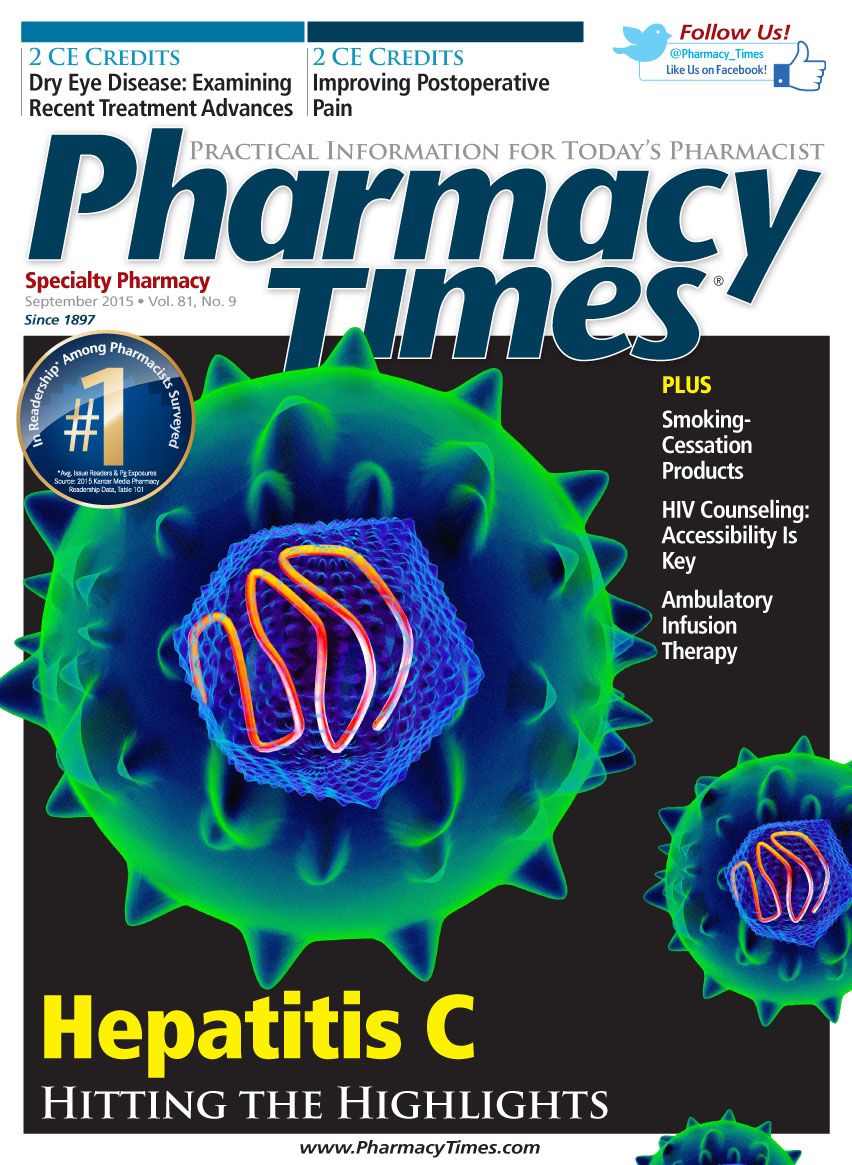Publication
Article
Pharmacy Times
Nonemergency? Head to the Retail Clinic
Author(s):
The introduction of retail clinics into the health care marketplace in the early 2000s has slowly shifted the way people receive ambulatory care-offering critical access to care for the nearly 77 million Americans who are uninsured or underinsured.
Long wait times in hospital emergency departments (EDs) are a nationwide problem. Many patients anticipating they need pricey emergency care cluster at hospitals when their conditions are actually minor and can be treated at a doctor’s office or retail clinic for a fraction of the cost.
Can nonurgent retail clinics quell the number of patrons with noncritical health concerns congesting ED waiting rooms? Although the answer is yes, the number of patients opting for retail clinics over EDs is not enough to cause a major shift in the nonemergent health care marketplace. Before the advent of the retail clinic and the urgent care clinic, EDs were the only location at which patients could receive medical treatment during nonstandard business hours. This lack of accessible health care prompted the trend of patients heading to hospitals for nonemergent medical issues.
The introduction of retail clinics into the health care marketplace in the early 2000s has slowly shifted the way people receive ambulatory care—offering critical access to care for the nearly 77 million Americans who are uninsured or underinsured.1 Although several retail clinic chains have also branched into chronic condition management in the past few years, the typical clinic model predominately offers acute care on a walk-in basis. The extended hours offered by retail clinics, coupled with the low cost of services and minimal wait times, are an added bonus for those seeking nonemergent, acute care at an alternative location when a doctor’s office may be closed and an ED visit is unnecessary.
Despite this increase in access to retail clinics, however, patients still tend to flock to EDs for care of their minor illnesses or injuries. An estimated 13.7% to 27.1% of all ED visits could have been taken care of at a retail clinic, according to study results published in the journal Health Affairs.2 Another study conducted by the RAND Corporation found that the 10 most common problems treated at retail clinics make up 12% of all ED visits.3
Cost Differences
Although retail clinics and EDs both provide walk-in care for acute conditions, a trip to the hospital for a nonemergent problem will be more expensive even with similar treatment. For the same nonemergent malady, the average cost of treatment at an ED is roughly $580 more than a comparable office visit.4 Treatment of the same condition, however, at a retail clinic will cost 80% less than at the ED and 30% to 40% less than at a doctor’s office.5 Furthermore, retail clinics are solely staffed with nurse practitioners and physician assistants, which EDs also use to treat minor health concerns congesting the department.6
Hospital Overspending
EDs packed with uncritical maladies not only cost patients more money, they cost the hospitals, as well. Across the United States, 56% (approximately 67 million) of ED visits are potentially avoidable, according to the results of a study published by the Agency for Healthcare Research and Quality.7 In addition, nonemergent conditions make up 40% of all ED visits, 31% of which take place during regular business hours. When a hospital ED uses resources for minor concerns, overspending is a given.
To redirect patients with common, nonemergent medical issues to another health care location, some hospitals owned by the Hospital Corporation of America (HCA), the largest for-profit hospital chain in the United States, have instituted an upfront payment system. According to Kaiser Health News, approximately 80,000 ED patients at HCA hospitals in 2011 left after being told they had to pay $150 up front because their illness or injury did not constitute an emergency.8 The goal with this initiative is to cut hospital costs and diminish excessive wait times at EDs.
Quality of Care
There is no correlation between the caliber of care at retail clinics and their low price. A 2009 study published in the Annals of Internal Medicine found that the quality of care at retail clinics is similar, and sometimes better, than at more costly urgent care clinics and EDs.9 A CVS Health study in 2014 found similar results.10 Both studies obtained their data by surveying a large number of people suffering from 3 common acute conditions for information about the quality of care they received at 3 locations: a retail clinic (a CVS MinuteClinic in the CVS Health study), an urgent care clinic, and an ED. Both studies found that the quality of care at retail clinics was comparable to the treatment administered in EDs.
CVS Health’s Chief Scientific Officer William Shrank, MD, said, “The findings [of the CVS Health study] are consistent with previous research in suggesting that care at retail clinics for common acute conditions is the same or better than the care delivered in more costly EDs and urgent care facilities.
Urgent Care Clinics Versus Retail Clinics
If a patient’s injury or ailment is not lifethreatening, but requires more than what a retail clinic has to offer, an urgent care center is an alternative that provides quality care at a lower cost. These care centers often provide radiography, on-site blood testing, and stitching of minor lacerations, which retail clinics do not provide.
“Unfortunately, there is no single option that is best for all conditions,” said Dr. Ateev Mehrotra, an associate professor of health care policy and medicine at Harvard Medical School, whose research focuses on health care delivery innovations. “The key question for a given condition is what is the best place to go? For example, for a healthy young person who is worried about strep, a retail clinic option might be the best option. For a mild asthma exacerbation, maybe a physician’s office might be best. If you are worried you broke a bone, urgent care.”
Retail Clinic Growth
Retail clinics are sprouting up all around the country at an accelerated rate. According to a survey conducted by Kalorama Information, more than $1 billion in retail clinic sales took place in 2014 and there was an estimated 1869 retail clinics operating in the United States at the beginning of 2015.10 This surge in retail clinic expansion stems from a rise in usage, an increasing acceptance of this as a health care option, and the cost-effectiveness of the clinics, the study indicated.
“Retail clinics have led to a greater focus on outpatient care [for] convenience, and they are on the vanguard of many new care options (e-visits, kiosks, urgent care) that focus on convenience,” Dr. Mehrotra said.
Retail clinics are not expected to go away any time soon, with many more clinics estimated to pop up across the country. According to the Convenient Care Association, a projected 3000 retail clinics will be operating by 2016.11
Endnote
There is no shortage of options for accessible, nonemergent acute care that does not include long wait times and hefty hospital bills. While the marketplace is definitely seeing a shift with the emergence and expansion of retail clinics, there are no definitive data indicating that increased retail clinic use correlates to fewer nonemergent hospital visits. The spread of retail clinics and their growing acceptance, however, will inevitably lessen overcrowded ED waiting rooms.
Katrina Rossos is a freelance writer and journalist living in New Jersey. She graduated from Tulane University with a BA in English and film studies. She was an editor for AOL, and her work has appeared in New Jersey Life magazine and Our Town newspaper, as well as on Azula.com and TheDodo.com.
References
- Increasing access. Convenient Care Association website. www.ccaclinics.org/research-a-resources/fact-sheets. Accessed March 31, 2015.
- Weinick RM, Burns RM, Mehrotra A. Many emergency department visits could be managed at urgent care centers and retail clinics. Health Aff (Milwood). 2010;29(9):1630-1636. doi: 10.1377/hlthaff.2009.0748.
- Mehrotra A, Wang MC, Lave JR, Adams JL, McGlynn EA. Retail clinics, primary care physicians, and emergency departments: a comparison of patients’ visits. Health Aff (Milwood). 2008;27(5):1272-1282. doi: 10.1377/hlthaff.27.5.1272.
- Machlin SR. Statistical brief 111: expenses for a hospital emergency room visit, 2003. Agency for Healthcare Research and Quality website. http://meps.ahrq.gov/mepsweb/data_files/publications/st111/stat111.pdf. Published January 2006. Accessed March 31, 2015.
- Mehrotra A, Liu H, Adams JL, et al. Comparing costs and quality of care at retail clinics with that of other medical settings for 3 common illnesses. Ann Intern Med. 2009;151(5): 321-328.
- Weinick RM, Burns RM, Mehrotra A. Many emergency department visits could be managed at urgent care centers and retail clinics. Health Aff (Milwood). 2010;29(9):1630-1636. doi: 10.1377/hlthaff.2009.0748.
- McClellan M, McDonald K, Davies S, et al. AHRQ Quality Indicators—Guide to Prevention Quality Indicators: Hospital Admission for Ambulatory Care Sensitive Conditions. Rockville, MD: Agency for Healthcare Research and Quality; 2001. www.ahaphysicianforum.org/resources/appropriate-use/ACSC/content/AHRQ-pqiguide.pdf. Accessed March 31, 2015.
- Galewitz P. Hospitals demand payment upfront from ER patients with routine problems. Kaiser Health News website. http://kaiserhealthnews.org/news/hospitals-demand-payment-upfront-from-er-patients/. Published February 20, 2012. Accessed March 30, 2015.
- CVS Health Research Institute data shows excellent quality of care at MinuteClinic for common acute conditions [press release]. Woonsocket, RI: CVS Health; October 16, 2014. www.cvshealth.com/newsroom/press-releases/cvsminuteclinic/cvs-health-research-institute-data-shows-excellent-quality. Accessed April 2, 2015.
- Retail clinics 2015: growth of stores, consumer opinion, leading competitors, sales of products to clinics (diagnostic tests, pharmaceuticals, vaccines), clinic sales forecasts and trends. Kalorama Information website. www.kaloramainformation.com/Retail-Clinics-Growth-8792050/. Published March 3, 2015. Accessed March 31, 2015.
- Increased access. Convenient Care Association website. www.ccaclinics.org/research-a-resources/fact-sheets. Accessed March 31, 2015.
























